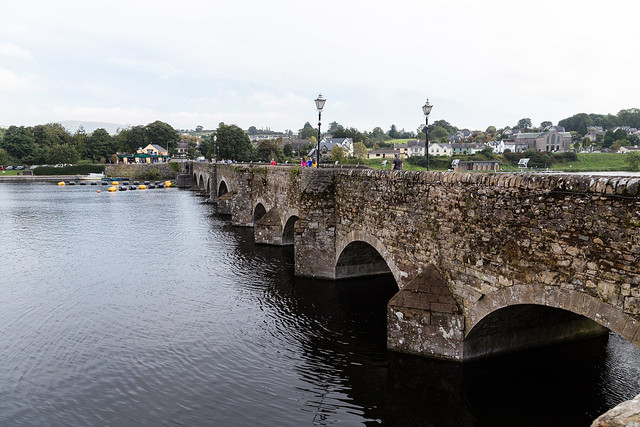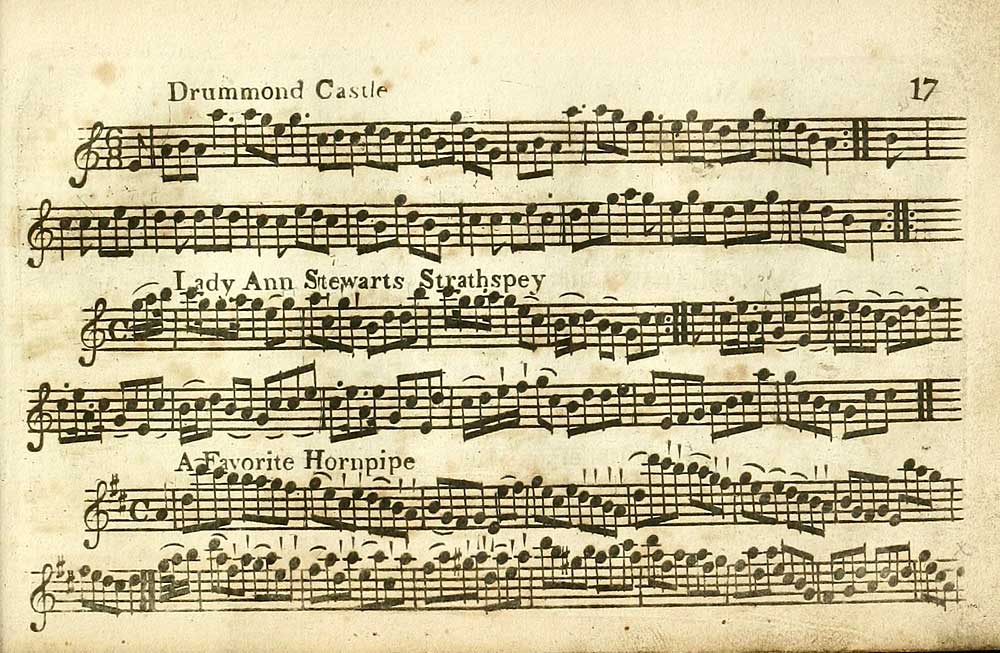An usual title for this Irish jig that completes our pair of spookily-titled tunes (see The Haunted House). Pull the Knife and Stick it in Again is in E minor or E Dorian, depending on your take on it, which contrasts nicely with a G major tune.
 It was Matt Molloy who first put it into E minor from A minor and he gives the story that there once was a witch who used to ambush riders by dropping on them from the treetops. The way to break her spell was to stab her and leave the knife in, and as long as one ignored her pleas to ‘pull it out and stick it in again’, one was safe. It was follow to comply with her request, for once the knife was removed the spell resumed. According to the Fiddler’s Companion, the title apparently refers to a County Clare saying that relates to the Hag of Balla, which appears to be near Castlebar in Mayo as far as I can tell. It seems that the tune may also be related to a reel in A minor called Castle Kelly.
It was Matt Molloy who first put it into E minor from A minor and he gives the story that there once was a witch who used to ambush riders by dropping on them from the treetops. The way to break her spell was to stab her and leave the knife in, and as long as one ignored her pleas to ‘pull it out and stick it in again’, one was safe. It was follow to comply with her request, for once the knife was removed the spell resumed. According to the Fiddler’s Companion, the title apparently refers to a County Clare saying that relates to the Hag of Balla, which appears to be near Castlebar in Mayo as far as I can tell. It seems that the tune may also be related to a reel in A minor called Castle Kelly.
 The tune goes below the bottom D of the whistles and flutes and there are two strategies that can be adopted when approaching this. One is substitution of the phrase for a different one that both fits the instrument and makes sense within the tune; the other is to more simply play the note an octave above the written one. This is the common approach with this tune.
The tune goes below the bottom D of the whistles and flutes and there are two strategies that can be adopted when approaching this. One is substitution of the phrase for a different one that both fits the instrument and makes sense within the tune; the other is to more simply play the note an octave above the written one. This is the common approach with this tune.
Resources for the tune are now up. Our version is a little unusual and differs slightly from others in that it shifts into D in phrases, creating some strong contrasts within the melody itself. It is worth checking out the version on Fiddler’s Companion (above) for comparison.
Photo: Our version of the tune written out in the traditional music notation system that forms the basis for ABC notation.(c) Gordon Turnbull

 Inspired by the Brownies who were having a Halloween party at our venue last week, I changed my plans at the last minute and made The Haunted House the tune that we focused on, a jig written by the late County Galway flute player
Inspired by the Brownies who were having a Halloween party at our venue last week, I changed my plans at the last minute and made The Haunted House the tune that we focused on, a jig written by the late County Galway flute player 


